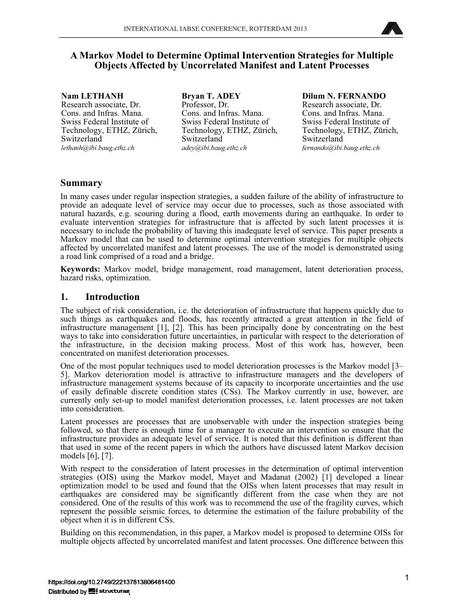A Markov Model to Determine Optimal Intervention Strategies for Multiple Objects Affected by Uncorrelated Manifest and Latent Processes

|
|
|||||||||||
Détails bibliographiques
| Auteur(s): |
Nam Lethanh
Bryan T. Adey Dilum N. Fernando |
||||
|---|---|---|---|---|---|
| Médium: | papier de conférence | ||||
| Langue(s): | anglais | ||||
| Conférence: | IABSE Conference: Assessment, Upgrading and Refurbishment of Infrastructures, Rotterdam, The Netherlands, 6-8 May 2013 | ||||
| Publié dans: | IABSE Conference, Rotterdam, May 2013 | ||||
|
|||||
| Page(s): | 226-227 | ||||
| Nombre total de pages (du PDF): | 8 | ||||
| Année: | 2013 | ||||
| DOI: | 10.2749/222137813806481400 | ||||
| Abstrait: |
In many cases under regular inspection strategies, a sudden failure of the ability of infrastructure to provide an adequate level of service may occur due to processes, such as those associated with natural hazards, e.g. scouring during a flood, earth movements during an earthquake. In order to evaluate intervention strategies for infrastructure that is affected by such latent processes it is necessary to include the probability of having this inadequate level of service. This paper presents a Markov model that can be used to determine optimal intervention strategies for multiple objects affected by uncorrelated manifest and latent processes. The use of the model is demonstrated using a road link comprised of a road and a bridge. |
||||
